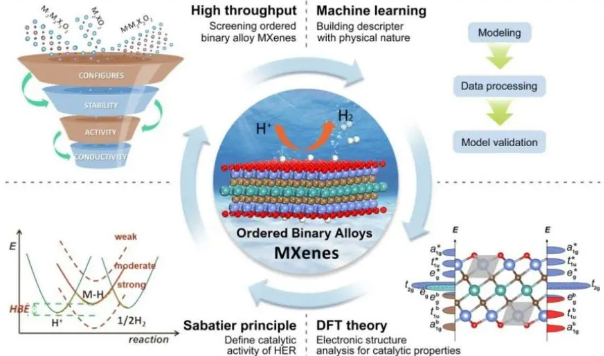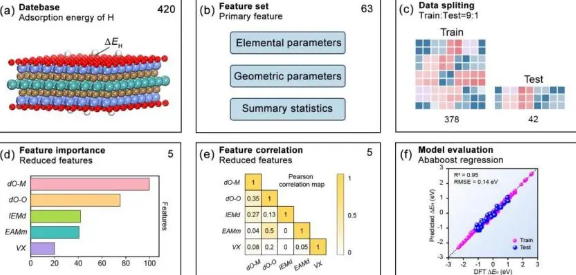The research results of the new material calculation research team of the Computing Center of the Chinese Academy of Sciences are published in the top international journals
QQ Academic Group: 1092348845
Detailed

Two-dimensional MXenes-OBAs catalytic material discovery framework
Two-dimensional (2D) materials have a large surface area-to-volume ratio and excellent chemical activity, and are considered as potential energy storage and conversion materials. Materials such as graphene and two-dimensional transition metal sulfides have been extensively studied in the electrolysis of water to produce hydrogen, but how to convert in-plane atoms into catalytically active sites is still challenging. The 2D MXenes (M is transition metal, X represents carbon and/or nitrogen) material stripped from the MAX phase are widely used in the fields of energy storage and conversion, electrocatalysis, electromagnetic shielding, and electronic devices. 2D MXenes ordered binary alloy material is a new type of MXenes electrocatalytic multifunctional material. However, because there are more than 70 kinds of master phase MAX, the space for alloy combination is quite large. The traditional trial and error method requires a large number of repeated experiments, the process is cumbersome, the development cycle is long, and the resource consumption is large. Precise synthesis guided by theory is of great significance for the development of new materials and new properties. In recent years, with the substantial increase in computing power, it has become possible to use big data mining and high-throughput computing methods to accelerate the discovery of new materials.

Schematic diagram of machine learning framework
This work combines big data-driven high-throughput computing with machine learning, and integrates high-throughput computing processes and machine learning frameworks as an advanced method to develop efficient 2D MXenes catalysts, and shows in the evaluation of catalytic activity trends and the design of new complex catalysts It is expected to be extended to a wider range of new material designs.
Main members of the research team
The new materials computing research team of the Computing Center has received strong support from the "Young Backbone" talent program of the Beijing Institute of Technology and Science. The team members are mainly talents with doctoral degrees and senior titles. The research fields include new material computing platform design, new materials High-throughput screening, machine learning optimization and material big data mining, etc., have undertaken a number of national-level scientific research projects such as key special projects of material genetic engineering, and provide society with different levels of research and development services.
- Previous: Chip revolution: two-d
- Next: Dong Yubin Small of Sh


 Material calculation
Material calculation
